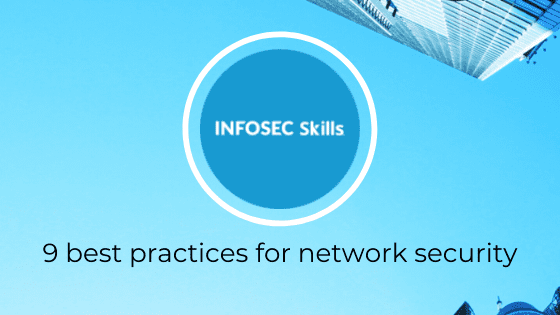Network security is the practice of protecting the network and data to maintain the integrity, confidentiality and accessibility of the computer systems in the network. It covers a multitude of technologies, devices and processes, and makes use of both software- and hardware-based technologies.
Each organization, no matter what industry they belong to or what their infrastructure size is, requires comprehensive network security solutions to protect it from various cyberthreats happening in the wild today.
Network security layers
When we talk about network security, we need to consider layers of protection:
Physical network security
Physical network security controls deal with preventing unauthorized persons from gaining physical access to the office and network devices, such as firewalls and routers. Physical locks, ID verification and biometric authentication are few measures in place to take care of such issues.
Technical network security
Technical security controls deal with the devices in the network and data stored and in transit. Also, technical security needs to protect data and systems from unauthorized personnel and malicious activities from employees.
Administrative network security
Administrative security controls deal with security policies and compliance processes on user behavior. It also includes user authentication, their privilege level and implementing changes to the existing infrastructure.
Network security best practices
Now we have a basic understanding and overview of network security, let’s focus on some of the network security best practices you should be following.
1. Perform a network audit
The first step to secure a network is to perform a thorough audit to identify the weakness in the network posture and design. Performing a network audit identifies and assesses:
- Presence of security vulnerabilities
- Unused or unnecessary applications
- Open ports
- Anti-virus/anti-malware and malicious traffic detection software
- Backups
In addition, third-party vendor assessments should be conducted to identify additional security gaps.
2. Deploy network and security devices
Every organization should have a firewall and a web application firewall (WAF) for protecting their website from various web-based attacks and to ensure safe storage of their data. To maintain the optimum security of the organization and monitor traffic, various additional systems should be used, such as intrusion detection and prevention (IDS/IPS) systems, security information and event management (SIEM) systems and data loss prevention (DLP) software.
3. Disable file sharing features
Though file sharing sounds like a convenient method for exchanging files, it’s advisable to enable file sharing only on a few independent and private servers. File sharing should be disabled on all employee devices.
4. Update antivirus and anti-malware software
Businesses purchase desktop computers and laptops with the latest version of antivirus and anti-malware software but fail to keep it updated with new rules and updates. By ensuring that antivirus and anti-malware are up to date, one can be assured that the device is running antivirus with the latest bug fixes and security updates.
5. Secure your routers
A security breach or a security event can take place simply by hitting the reset button on the network router. Thus it is paramount to consider moving routers to a more secure location such as a locked room or closet. Also, video surveillance equipment and CCTV can be installed in the server or network room. In addition, the router should be configured to change default passwords and network names, which attackers can easily find online.
6. Use a private IP address
To avoid unauthorized users or devices from accessing the critical devices and servers in the network, private IP addresses should be assigned to them. This practice enables the IT administrator to easily tap on all unauthorized attempts by the users or devices connecting to your network for any suspicious activity.
7. Establish a network security maintenance system
A proper network security maintenance system should be established which involves processes such as :
- Perform regular backups
- Updating the software
- Schedule change in network name and passwords
Once a network security maintenance system is established, document it and circulate it to your team…[…] Read more »….


ROLE DESCRIPTION
We are looking for a Membership Manager to join the company and take on one of the most opportunistic roles the industry has to offer. This is a role that allows for you to create and develop relationships with leading solution providers in the enterprise technology space. Through extensive research and conversation you will learn the goals and priorities of IT & IT Security Executives and collaborate with companies that have the solutions they are looking for. This role requires professionalism, drive, desire to learn, enthusiasm, energy and positivity.
Role Requirements:
Role Responsibilities:
Apex offers our team:
Entry level salary with competitive Commission & Bonus opportunities
Apex offers the ability to make a strong impact on our products and growing portfolio.
Three months of hands on training and commitment to teach you the industry and develop invaluable sales and relationship skills.
Opportunity to grow into leadership role and build a team
Extra vacation day for your birthday when it falls on a weekday
All major American holidays off
10 paid vacation days after training period
5 paid sick days
Apply Now >>